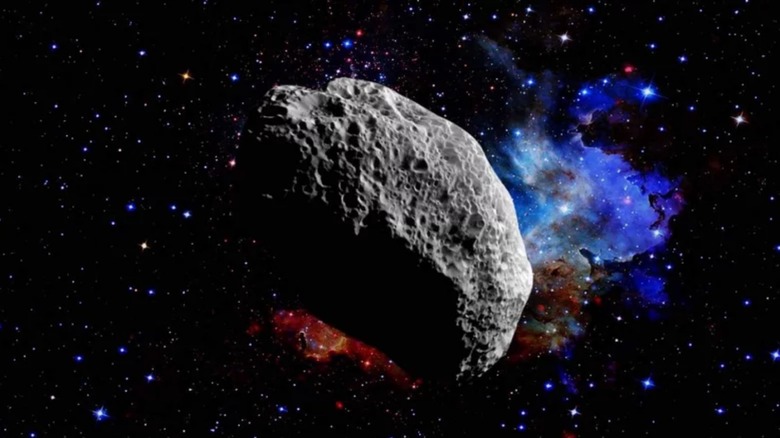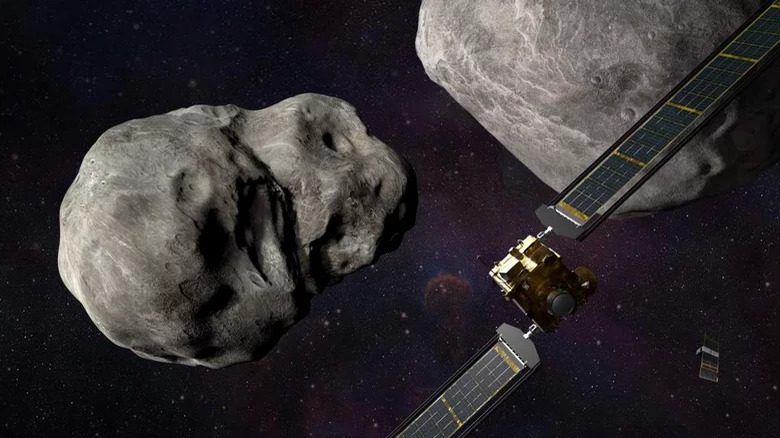Here's What Would Really Happen If An Asteroid Was Going To Hit Earth
If you watched Don't Look Up this Christmas, you might be one of many people wondering about how realistic the danger posited by the movie was. Could Earth really be struck by an asteroid? How would scientists react if they did spot an asteroid heading for us?
To answer your questions this week, NASA released a video featuring asteroid expert Dr. Kelly Fast, talking about what would really happen if an asteroid threatened our planet. Fast points out that it's important for us to locate asteroids before they do pose a threat, because an asteroid impact would be a preventable natural disaster. NASA has a department called the Planetary Defense Coordination Office which works to track asteroids and predict their future movements, including whether any might be on a collision course with Earth. By predicting future threats, that allows time of years or even decades to launch a deflection mission to change the asteroid's course and keep us safe.
It's worth mentioning that many asteroids do collide with Earth every year, but the vast majority are small and burn up in the atmosphere, creating shooting stars. In fact, there may be as many as thousands of small pieces of debris hitting the planet every day (via NASA), but our atmosphere protects us from these. However, there are times when bigger asteroids have posed significant threats to regions on Earth, such as the famous Tunguska Impact in 1908, when an asteroid created an enormous explosion in a sparsely populated area of Russia (via NASA).
NASA's plan to protect Earth
NASA/Johns Hopkins, APL/Steve Gribben
If we did spot a large asteroid heading toward Earth, we needn't be totally helpless. Space agencies have plans for anti-asteroid technologies, in an area called planetary defense. A recently launched NASA mission called DART (Double Asteroid Redirection Test) aims to take an unusual approach for a space mission: the spacecraft will deliberately crash into an asteroid, to see if that is effective at redirecting an asteroid which could potentially threaten Earth.
The asteroid which DART is heading toward is one of a pair, called Didymos and Dimorphos (via Digital Trends). Neither of these is a threat to us on Earth, so there's no need to worry. But NASA plans to test out what they could do if there really was a dangerous asteroid on its way.
DART will crash into the smaller of the two asteroids, Dimorphos, and try to nudge it out of its current path. The spacecraft is around 100 times smaller than the asteroid, so that isn't an easy task. And the spacecraft needs to be smart as well, as it will use onboard computers to locate the asteroid and point itself toward it.
DART was launched in November 2021, and is now traveling through the solar system on its way to its asteroid target. It is expected to arrive there in 2022 and attempt its collision.
But that won't be the end of the mission. Researchers want to look up close at the effect of the impact and see exactly how it affected the asteroid. So the European Space Agency is working on another spacecraft called Hera, which will follow the path of DART to the asteroid pair and collect data on how effective the collision was. Hera will launch in 2024 and should arrive at the scene of impact in 2026 (via ESA).

